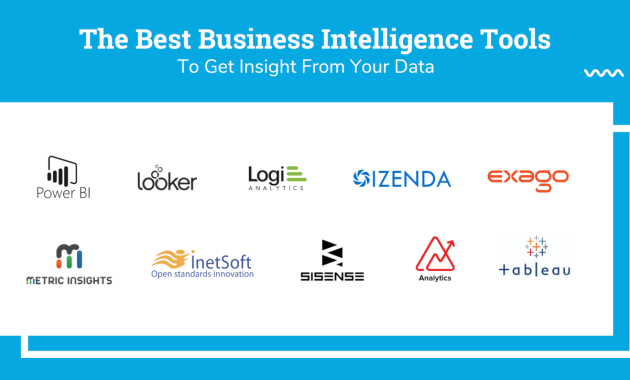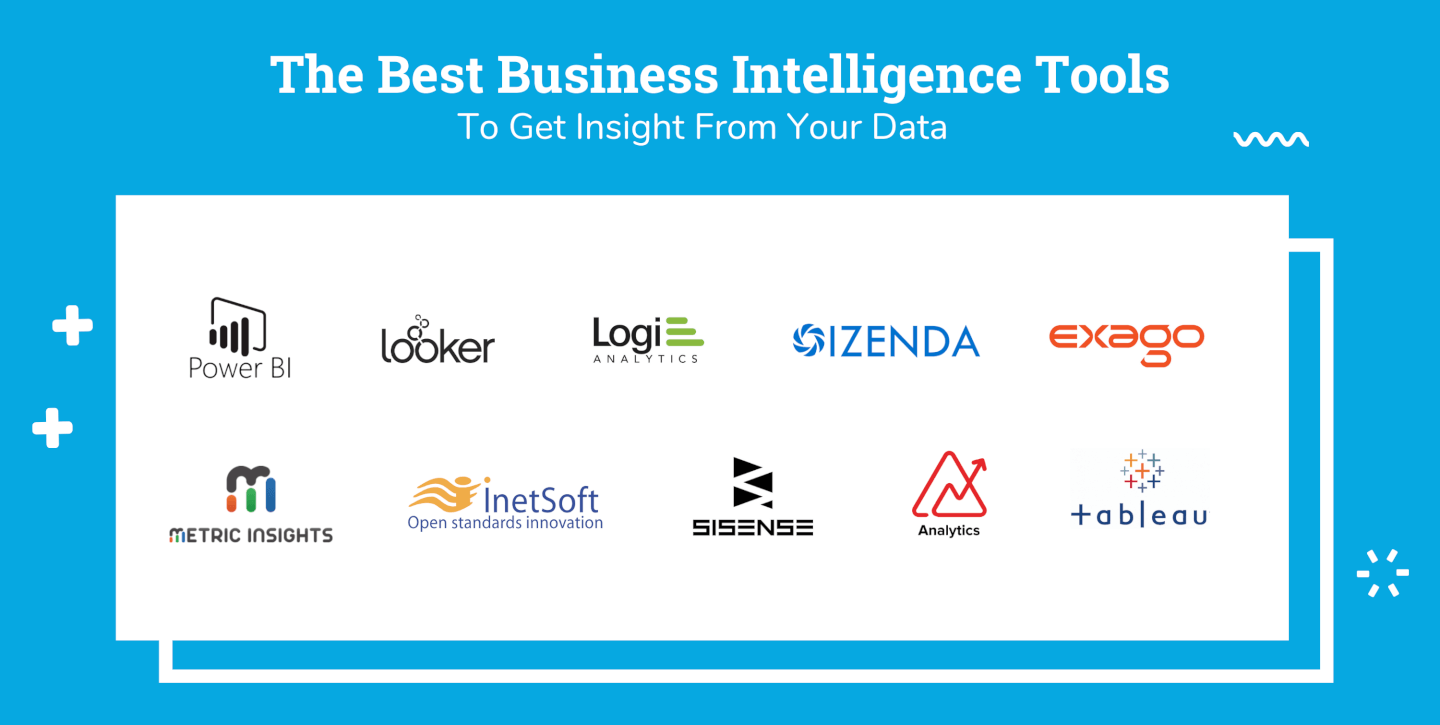
Unlocking Insights: The 8 Best Business Intelligence Tools to Supercharge Decision-Making
In today’s data-driven world, making informed decisions is paramount. Businesses of all sizes need to harness the power of their data. They must transform raw information into actionable insights. This is where business intelligence (BI) tools come into play. These tools empower organizations to analyze data, identify trends, and make strategic choices. This article delves into the eight best business intelligence tools available. These tools can help you boost your decision-making capabilities.
The right BI tool can be a game-changer. It can provide a competitive edge. It allows businesses to understand their performance, anticipate market changes, and optimize operations. Selecting the right tool is crucial. It depends on factors like your business needs, data volume, and technical expertise. Let’s explore some top contenders in the BI landscape.
Understanding the Power of Business Intelligence
Business intelligence is more than just reporting. It is a comprehensive process. This process involves collecting, analyzing, and visualizing data. The goal is to gain insights that drive better business outcomes. BI tools enable users to:
- Aggregate data from various sources.
- Identify patterns and trends.
- Create interactive dashboards and reports.
- Share insights with stakeholders.
- Make data-driven decisions.
Effective BI implementation can lead to increased efficiency. It can also improve profitability and enhance customer satisfaction. Choosing the right BI tool is an investment in your company’s future.
Top Business Intelligence Tools to Consider
Here are eight of the best business intelligence tools. They are designed to empower your decision-making process. Each tool offers unique features and benefits. Consider your specific needs when making your selection.
Tableau
Tableau is a leading BI tool known for its user-friendly interface. It is also known for its powerful data visualization capabilities. Tableau allows users to connect to a wide range of data sources. It also allows users to create interactive dashboards and reports. Its drag-and-drop functionality makes it easy to analyze data. This makes it accessible to users of all skill levels. Tableau’s focus is on visual storytelling. This helps users to easily communicate insights.
Microsoft Power BI
Microsoft Power BI is a versatile BI tool. It integrates seamlessly with other Microsoft products. It is a cost-effective solution for businesses of all sizes. Power BI offers a wide range of features. These features include data modeling, data visualization, and collaboration tools. It is known for its intuitive interface and robust analytical capabilities. Power BI is a strong choice for organizations already invested in the Microsoft ecosystem.
Qlik Sense
Qlik Sense is another powerful BI tool. It uses an associative data model. This allows users to explore data in new and intuitive ways. Qlik Sense offers advanced analytical capabilities. It also offers strong data governance features. It is suitable for complex data analysis. It is also suitable for businesses that need to ensure data integrity.
Looker (Google Cloud)
Looker, now part of Google Cloud, is a modern BI platform. It focuses on data exploration and collaboration. Looker uses a data modeling language called LookML. This allows users to define and reuse data models. Looker is a good choice for organizations that need advanced analytics. It is also good for those who need robust data governance. Looker’s integration with Google Cloud services is a key advantage.
Sisense
Sisense is designed for complex data environments. It provides a single platform for data preparation, analysis, and visualization. Sisense excels at handling large datasets. It offers in-memory technology for fast performance. It is a strong choice for businesses. These businesses need to analyze big data and generate real-time insights. Sisense also provides embedded analytics capabilities.
ThoughtSpot
ThoughtSpot is a search-driven analytics platform. It allows users to ask questions in natural language. It then generates insights automatically. ThoughtSpot is known for its ease of use and speed. It empowers business users to find answers quickly. It reduces the need for specialized data analysis skills. This makes it a valuable tool for organizations looking to democratize data access. This is one of the best business intelligence tools.
Domo
Domo is a cloud-based BI platform. It offers a comprehensive suite of features. These features include data integration, visualization, and collaboration. Domo is designed for real-time insights. It provides users with up-to-the-minute data. Domo’s mobile capabilities make it easy to access insights on the go. It is a good choice for businesses that need a centralized and accessible BI solution.
Zoho Analytics
Zoho Analytics is a self-service BI and analytics platform. It is known for its ease of use and affordability. It is suitable for small and medium-sized businesses. Zoho Analytics integrates with many popular data sources. It provides a user-friendly interface for data analysis and visualization. It also offers features like data blending and forecasting. Zoho Analytics is an excellent option for businesses. These businesses need a cost-effective and easy-to-use BI solution.
Key Features to Look For in a BI Tool
When selecting a BI tool, consider these essential features:
- Data Connectivity: The ability to connect to various data sources.
- Data Visualization: Powerful and intuitive visualization capabilities.
- Data Analysis: Advanced analytical features for deep insights.
- User Interface: An intuitive and user-friendly interface.
- Collaboration: Features for sharing and collaborating on insights.
- Scalability: The ability to handle increasing data volumes.
- Security: Robust security features to protect sensitive data.
Evaluating these features will help you choose the best business intelligence tools. These tools will meet your specific needs.
Implementation Tips for Successful BI Adoption
Successful BI implementation requires careful planning and execution. Here are some tips:
- Define Your Goals: Clearly define your business objectives.
- Assess Your Data: Understand your data sources and quality.
- Choose the Right Tool: Select a tool that fits your needs.
- Train Your Users: Provide training to ensure user adoption.
- Establish Data Governance: Implement data governance policies.
- Monitor and Evaluate: Continuously monitor and evaluate the results.
By following these steps, you can maximize the value of your BI investment.
The Future of Business Intelligence
The field of business intelligence is constantly evolving. Emerging trends include:
- Artificial Intelligence (AI): AI is being integrated into BI tools. This is to automate analysis and provide predictive insights.
- Machine Learning (ML): ML is used to identify patterns and trends.
- Cloud-Based BI: Cloud-based BI solutions are becoming more popular. They offer scalability and accessibility.
- Data Democratization: The trend toward making data accessible to all users.
- Embedded Analytics: Integrating BI directly into business applications.
These trends will shape the future of BI. They will enable businesses to make even better decisions. This will lead to greater success. Staying informed about these trends is crucial. This will help you to stay ahead of the curve.
Conclusion
Choosing the right BI tool is a critical step. This step is for any organization. It wants to improve its decision-making process. The eight tools discussed offer a range of capabilities. They also cater to different business needs. By carefully evaluating your requirements, you can select the best BI tool. This tool will help you unlock the power of your data. This will ultimately drive better business outcomes. Investing in the best business intelligence tools is a smart move.
[See also: Data Visualization Best Practices]
[See also: Choosing the Right Data Analytics Platform]
[See also: The Role of Data in Digital Transformation]

